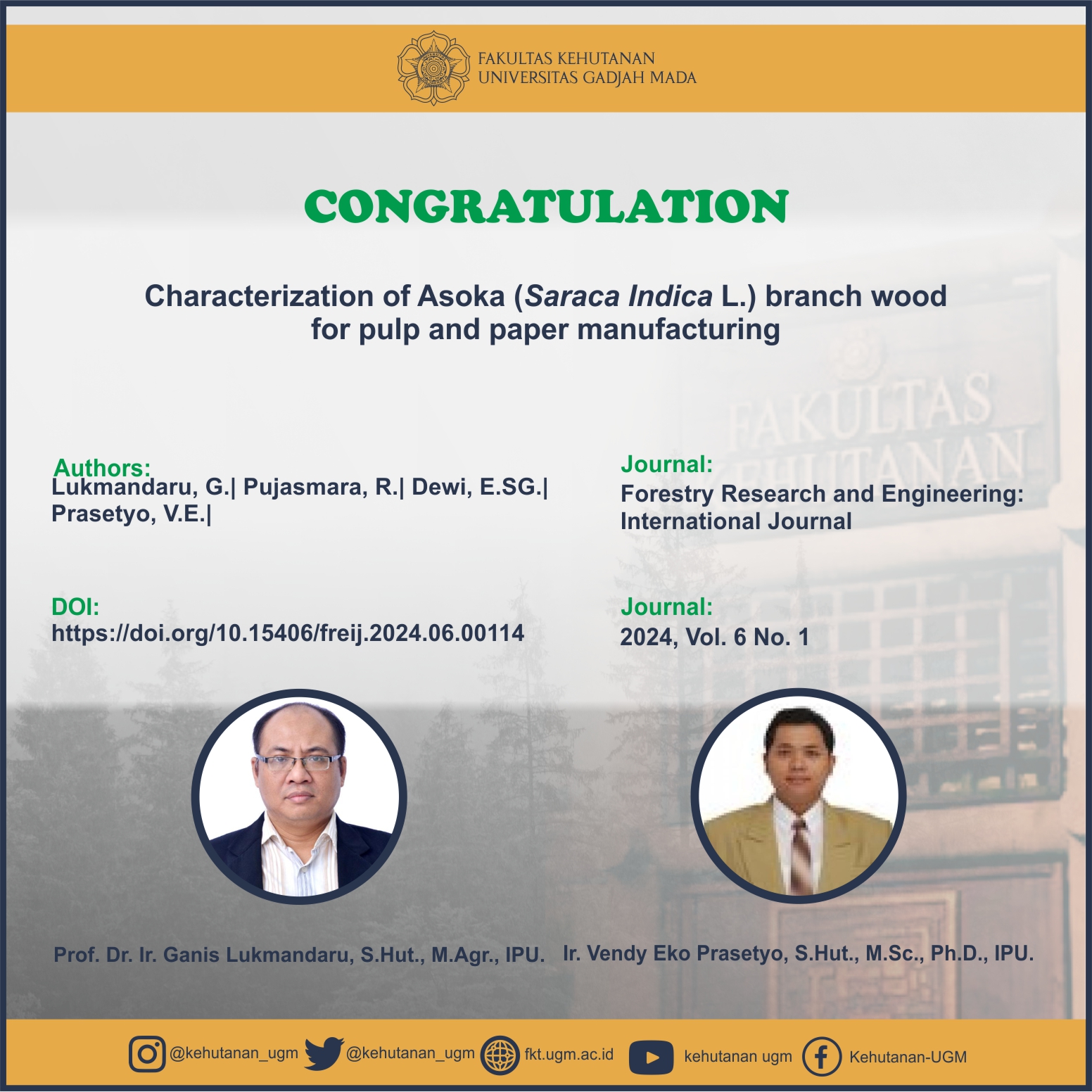
Abstract
Asoka (Saraca indica L.) branch wood was evaluated for its chemical composition, morphological features, kraft pulping behavior, and physical properties. The Asoka used in this study contained low amounts of cellulose and hemicellulose, but higher amounts of lignin and ash. It was found that the morphological indices of Asoka branch wood were mostly adequate for pulping and papermaking. The pulping of this wood was performed using chemi-mechanical pulping (CMP), conventional kraft pulping, and soda pulping processes under different conditions, i.e., active alkali and anthraquinone (AQ) addition. The results showed that alkaline pupling and CMP provided low screened yield values. Acceptable kappa numbers and reject levels were obtained at 22% active alkali of soda and kraft-AQ pulpings. CMP pulp showed higher brightness and screened yield than that of alkaline pulps. Alkaline pulpings of Asoka branch wood provided slightly different strength properties of paper sheets than those of CMP pulp. Based on the findings, it can be concluded that Asoka branch wood is more suitable as a raw material for mechanical pulping than it is for alkaline pulping.
SDGs:
1. SDGs 8:Decent Work and Economic Growth
2. SDGs 9:Industry, Innovation, and Infrastructure
3. SDGs 12:Responsible Consumption and Production
4. SDGs 13:Climate Action
5. SDGs 15:Life on Land
Link Dokumen:
Download
